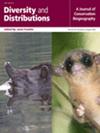A Multithreat Meta-Analytic Database for Understanding Insect Biodiversity Change
Abstract
Aim
Widespread declines in insect biodiversity have been attributed to a diverse set of anthropogenic drivers, but the relative importance of these drivers remains unclear. A key reason for this uncertainty is that their effects depend on many factors, such as taxonomy, geography, sampling method and the biodiversity metric considered. To better understand the relative impact of different drivers on insect biodiversity, effect sizes need to be anchored to major sources of heterogeneity and collected reproducibly through a structured and consistent protocol. This standardised approach will allow a quantitative synthesis of relative threats to insects, enabling more robust predictions of changes in insect biodiversity.
Innovation
Here we publish a global database of effect sizes that quantify the effect of 5 anthropogenic drivers on insect abundance, species richness, biomass and fecundity within the framework of the IUCN threat classification. While we only present results for a subset of major anthropogenic drivers and insect Orders, the database structure allows the addition of new studies for all major IUCN threats and insect Orders. Our current set of effect sizes was collated from 7 meta-analyses, including 6308 effect sizes from 317 studies, focusing on threats ranked highly in an initial expert elicitation process. Data collection followed an overall meta-protocol and a set of individual protocols tailored to each meta-analysis. Our database provides a framework for the first global meta-analytic overview of the response of insects to a range of major anthropogenic drivers.
Main Conclusions
Structured collation of both experimental and quasi-experimental effect sizes, together with metadata that capture the main sources of heterogeneity, is needed to understand the effect of anthropogenic activity on insects. In turn, this understanding opens the way to predicting how we might expect insect biodiversity to have changed in the past and into the future.


 求助内容:
求助内容: 应助结果提醒方式:
应助结果提醒方式:


